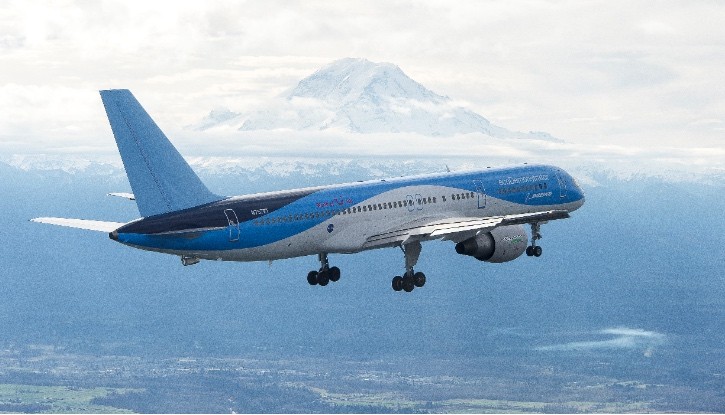NASA has just announced they are working on new ways to increase fuel efficiency and reduce emissions in the aircraft industry. Scientists will test the use of small devices that will blow jets of air on the vertical tail and non-stick coatings to help repel bugs from the leading edge of wings. These two will be mounted on a specially outfitted Boeing 757 airplane called the ecoDemonstrator.
Reducing fuel consumption and emissions are two of the biggest concerns the transportation industry is working on today. NASA’s Aeronautics Research Mission Directorate’s Integrated Systems Research Program, the Environmentally Responsible Aviation (ERA) Project is one of the teams looking for those answers.
The project was created in 2009 and explores and documents the feasibility, benefits and technical risk of vehicle concepts. Long story short, they are looking for new technologies to reduce aviation’s impact on the environment.
“Both [experiments] are designed to improve the air flow over the surface and ultimately reduce drag. Increased drag means fuel consumption, which results in more pollutants in the atmosphere. The goal of our project is to develop aircraft concepts and technologies to reduce the impact of aviation on the environment over the next 30 years,” said Fay Collier, manager of the project.
They have already proved the theory is quite effective in the tests they ran on the ground in NASA's facilities recently. However, scientists are looking forward to finding the same results in the air as well.
The second set of flight tests will assess how well five different coating repel insect residue. The experiment is called Insect Accretion and Mitigation and is looking to reduce the drag produced by the bug remains on the airplane. It might sound odd, but according to NASA, studies have shown that keeping the flow smooth over a wing can reduce fuel consumption as much as six percent.
NASA said that the two experiments on board the ecoDemonstrator 757 are part of eight, large-scale ERA integrated technology demonstrations being conducted in 2015 that will bring the agency’s ERA project to a close.
The project was created in 2009 and explores and documents the feasibility, benefits and technical risk of vehicle concepts. Long story short, they are looking for new technologies to reduce aviation’s impact on the environment.
“Both [experiments] are designed to improve the air flow over the surface and ultimately reduce drag. Increased drag means fuel consumption, which results in more pollutants in the atmosphere. The goal of our project is to develop aircraft concepts and technologies to reduce the impact of aviation on the environment over the next 30 years,” said Fay Collier, manager of the project.
Jet actuators and bug repellers
The engineers will install 31 tiny jets called sweeping jet actuators that can manipulate, on demand, the air that flows over the ecoDemonstrator 757’s vertical tail and rudder surfaces. They claim that using the sweeping jets to generate the same side force during takeoff and landing will reduce the size of the vertical tail.They have already proved the theory is quite effective in the tests they ran on the ground in NASA's facilities recently. However, scientists are looking forward to finding the same results in the air as well.
The second set of flight tests will assess how well five different coating repel insect residue. The experiment is called Insect Accretion and Mitigation and is looking to reduce the drag produced by the bug remains on the airplane. It might sound odd, but according to NASA, studies have shown that keeping the flow smooth over a wing can reduce fuel consumption as much as six percent.
NASA said that the two experiments on board the ecoDemonstrator 757 are part of eight, large-scale ERA integrated technology demonstrations being conducted in 2015 that will bring the agency’s ERA project to a close.
